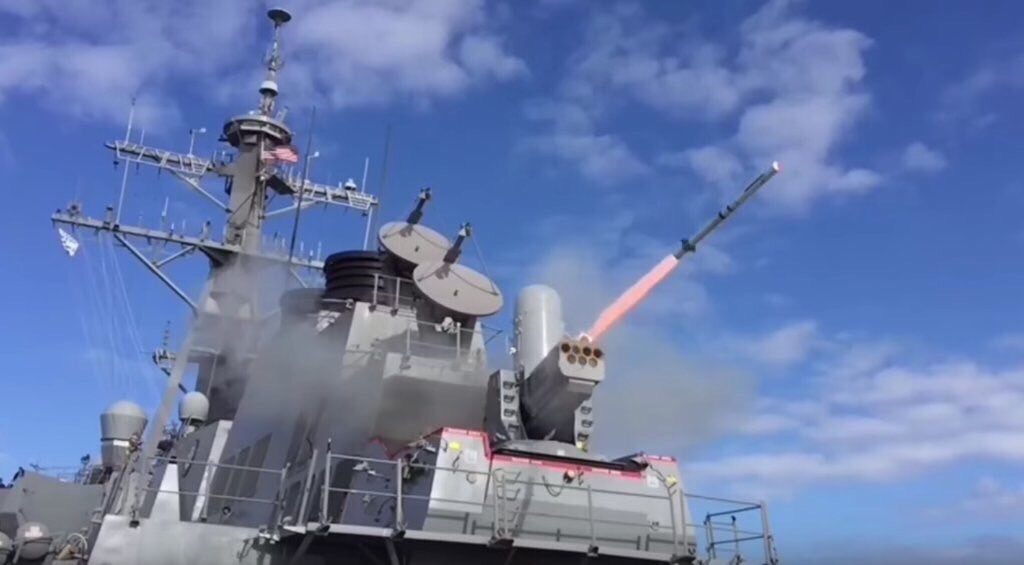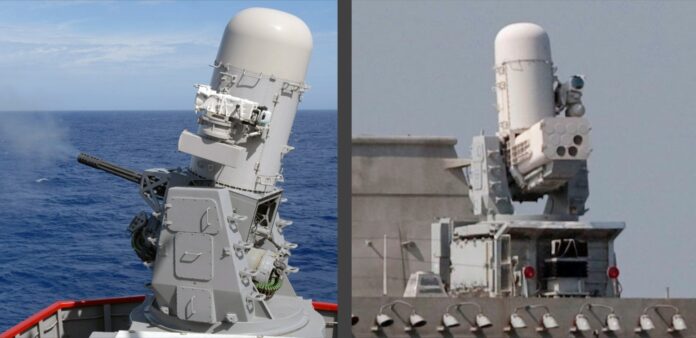Close-in weapon systems (CIWS) and Point Defence Missile Systems (PDMS) are the last weapons to engage incoming air threats. Most of the Anti Air Warfare capable ships have a layer-based defense system against air targets, and these layers are lined up from the outside to the inside, from the longest-range missile to the shortest-range gun. CIWS and PDMSs are the last layer members, and they have no excuse to be unsuccessful.
Therefore, while designing a new class of warships, navies make tense and long studies to select the best CIWS/PDMS, which is considered one of the most critical ship weapons. Generally proven systems are chosen, yet, some navies believe indigenous systems are more reliable. No matter what they choose, the most common question arises, which one is better, CIWS or PDMS? There are many criteria (accuracy, range, number of the target to engage, etc.) to select the best weapon. So, navies choose the most suitable one in accordance with their doctrine, economy, and force composition.
We compared the most common weapons below.
RAM (RIM-116 Rolling Airframe Missile) and SeaRAM:
The RIM-116 Rolling Airframe Missile (RAM) is a small, lightweight, infrared homing surface-to-air missile used by the German, Japanese, Greek, Turkish, South Korean, Saudi Arabian, Egyptian, Mexican, and U.S. Navies. It was initially intended and used primarily as a point-defense weapon against anti-ship cruise missiles. The missile is so named because it rolls around its longitudinal axis to stabilize its flight path, much like a bullet fired from a rifled barrel. As of 2005, it is the only U.S. Navy missile to operate in this manner. The Rolling Airframe Missiles, together with the Mk 49 Guided Missile Launching System (GMLS) and support equipment, make up the RAM Mk 31 Guided Missile Weapon System (GMWS). The Mk-144 Guided Missile Launcher (GML) unit weighs 5,777 kilograms (12,736 lb) and stores 21 missiles.
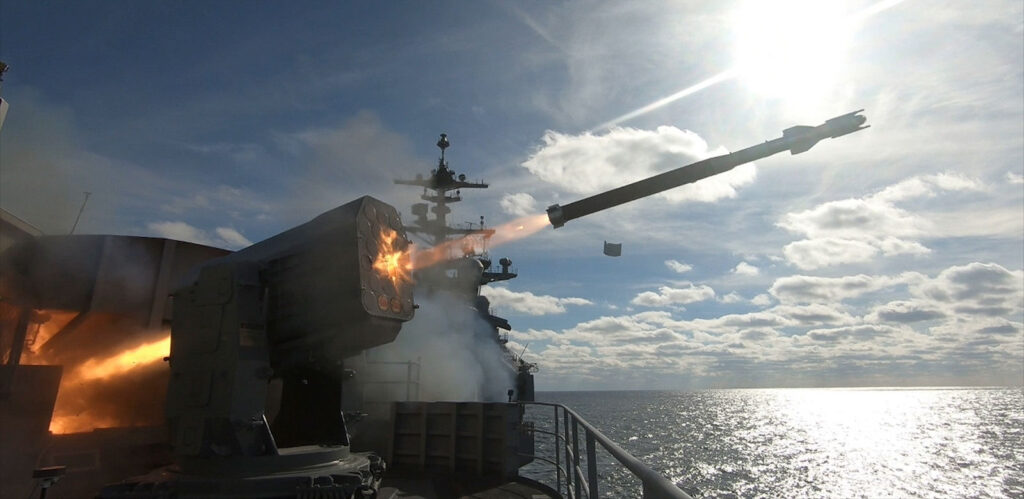
SeaRAM, a launcher variant equipped with independent sensors derived from the Vulcan Phalanx CIWS, is installed on Littoral Combat Ships and certain Arleigh Burke-class destroyers. It combines the radar and electro-optical system of the Phalanx CIWS Mk-15 Block 1B (CRDC) with an 11-cell RAM launcher to produce an autonomous system—one which does not need any external information to engage threats. Like the Phalanx, SeaRAM can be fitted to any class of ship.
The main difference between the two systems is that RAM requires a networked combat system to operate. It requires stand-alone sensors to detect and feed information to it. SeaRAM, like Phalanx CIWS, can work independently and even autonomously. It has its sensors and computing to do everything in the ‘mount’ to employ the weapons system fully. The RAM also houses more missiles, 21 vs. 11. Both use the same RIM-116 RAM missile.
The main benefit of SeaRAM is that you can plug & play, dropping it on just about any platform without combat systems or with existing combat systems, and it will work seamlessly because it’s independent.
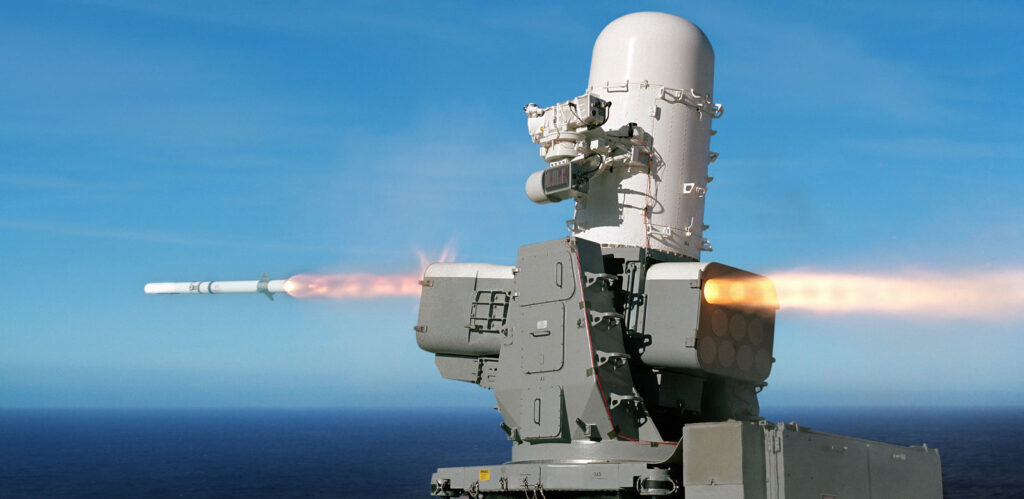
Phalanx CIWS:
Introduced in 1973, the Phalanx CIWS is a close-in weapon system for defense against incoming threats such as small boats, surface torpedoes, anti-ship missiles, and helicopters. It was designed and manufactured by the General Dynamics Corporation, Pomona Division, later a part of Raytheon. Consisting of a radar-guided 20 mm (0.8 in) Vulcan cannon mounted on a swiveling base, the Phalanx has been used by the United States Navy and the naval forces of 15 other countries.
The Phalanx Close-In Weapons System (CIWS) was developed as the last line of automated weapons defense (terminal defense or point defense) against all incoming threats, including small boats, surface torpedoes, anti-ship missiles (AShMs or ASMs), and attacking aircraft, including high-g and maneuvering sea-skimmers. It can fire between 3,000-4,500 20mm rounds per minute, either autonomously or under manual command.
Goalkeeper CIWS:
The Goalkeeper is a Dutch close-in weapon system (CIWS) introduced in 1979. It is an autonomous and completely automatic weapon system for short-range defense of ships against highly maneuverable missiles, aircraft, and fast-manoeuvering surface vessels. Once activated, the system automatically undertakes the entire air defense process from surveillance and detection to destruction, including selecting the next priority target.
The Goalkeeper has two radar sub-systems, one to find threats and another to track and engage them, which operate together to identify and prioritize targets and engage the highest priority one.
The 2D I band search radar, which can handle up to 18 targets at once, generates a threat picture which the gun system uses to identify and prioritize threats. The system identifies friend or foe (IFF) functionality to rule out friendly traces. The tracking radar operates in both the I band and K band to enable quick acquisition on the threat bearing. The dual-band system also reduces the effect of clutter, which can mask the target at low altitudes. A camera system on the assembly provides a visual fallback for the system operator.
The system’s reaction time to a Mach 2 sea-skimming missile such as the Russian SS-N-22 Sunburn from automatic detection to kill is reported to be 5.5 seconds, with the firing synchronized to start the engagement a range of 1,500 m and ending with a kill at 300 m.
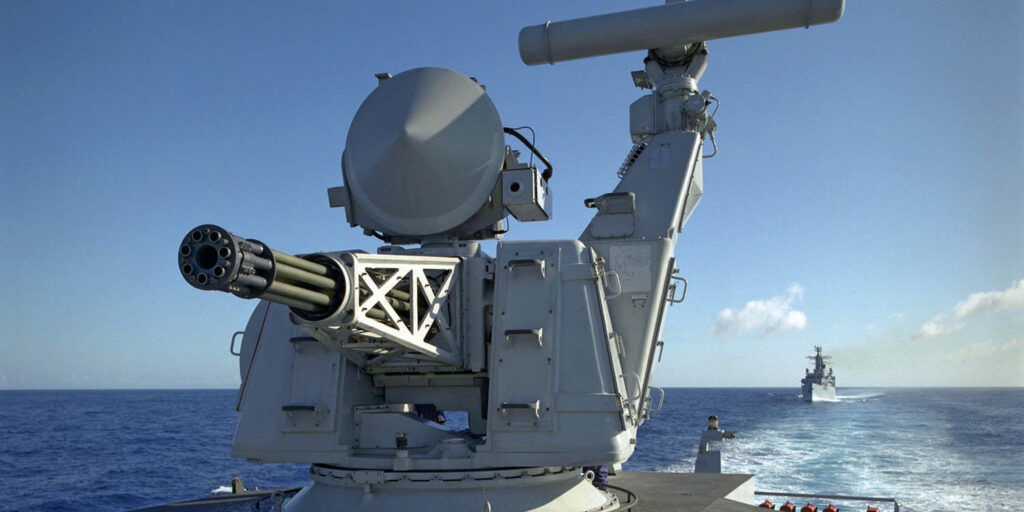
SeaRAM vs. Phalanx:
SeaRAM uses an 11-round magazine, and Phalanx uses a 1550-round magazine; both can be reloaded relatively quickly. Both are last-ditch ‘close-in weapons, and if you are using them, it’s a bad situation. It means either your longer ranged weapons failed to intercept the threat, or you ran out of the longer-ranged weapons. Both SeaRAM and Phalanx are very useful. SeaRAM has about six times the range of Phalanx.
The main advantage of SeaRAM over guns like Phalanx is the range and the computing to put the weapon on target. Depending on the incoming missile’s speed, SeaRAM can be launched at over 20 miles away and intercept it with a very high probability of kill at around 6 miles. Whatever the math is, the SeaRAM system will launch to kill the target around 6 miles out. Phalanx has an effective range of about a mile. Its kill zone will be within a mile.
The problem with the latter engagement is that 1 mile is very, very close to the ship. Even a successful engagement with 20-mm rounds, a cruise missile traveling 600 knots could continue kinetically and be dangerous.
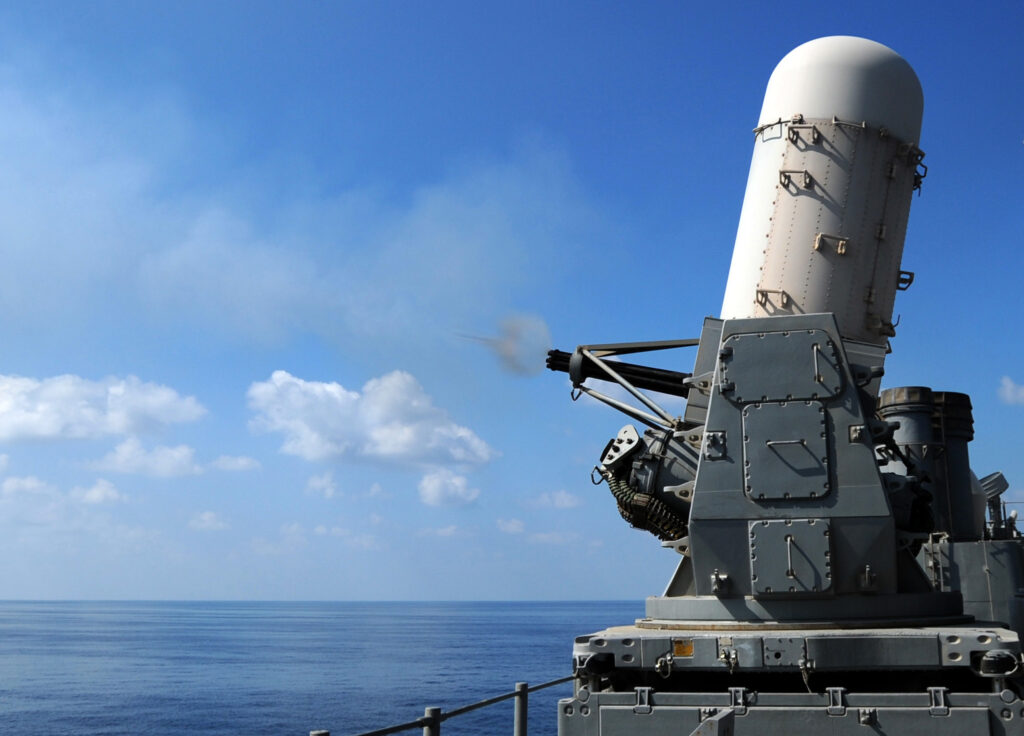
SeaRAM vs. Goalkeeper:
It has the same range and engagement benefits over Goalkeeper as it does over Phalanx. The Goalkeeper uses a bigger gun than Phalanx, 30mm vs. 20mm. That has its benefits and disadvantages. But the disadvantages win out, which is why most Navies are replacing Goalkeeper. The Goalkeeper is big, bulky, and requires more maintenance as well as more cumbersome to reload. All that with negligible benefits in range. 20mm can put up as many rounds and do so with better accuracy.
The best practice is layered air defense:
The best practice is to use a combination of both in a layered self-defense system where applicable. For example, the Nimitz-class CVN will use the Enhanced Sea Sparrow Missile (ESSM) out to 30 miles. If ESSM cannot catch the target, immediately RAM will have the time to engage after the miss, launching at between 20–30 miles and killing 6 miles. Phalanx will engage the targets ESSM misses, shooting at 3–4 miles and hopefully killing at 1 mile or closer. All three are integrated automatically in the Nimitz-class Ship Self Defense System (SSDS).
Why U.S. Navy choose SeaRAM for the latest warships:
SeaRAM is an extremely accurate weapon. Other missiles like ESSM are more maneuverable. However, accuracy is about more than missile agility. RAM utilizes a tri-mode seeker, mixing two different sensors. It has its own IR seeker and RF (radio frequency) seeker/link. The SeaRAM incorporates mount sensors that update the missile constantly with both a very high-resolution radar and its IR and Optical aid of the Block IB.
RAM is extremely effective against stealthy non-emitting anti-ship missiles due to the performance of its IR seeker. If the incoming missile is emitting active radar that the vast majority do, RAM will use its IR seeker and its RF seeker to home on the missile both visually and by emissions. Conversely, the RAM can accurately guide the incoming missile with just its RF seeker in an active jamming environment. The SeaRAM and its launcher sensors make these advantages two-fold.
RAM’s latest version, the Block II incorporates a new rocket motor, with a more powerful/longer thrust and a 4-axis actuator. It’s a steerable bullet with thrust vectoring. Block II is infinitely more maneuverable than the original Block 0 and Block I missile, which had the propulsion section of the AIM-9 Sidewinder. The 4-axis actuator allows for pinpoint and lightning-fast adjustments. Block II’s have a very high percentage of ‘skin on skin’ intercepts against even supersonic foes. Block II has an unrivaled record in testing on subsonic and supersonic targets.
